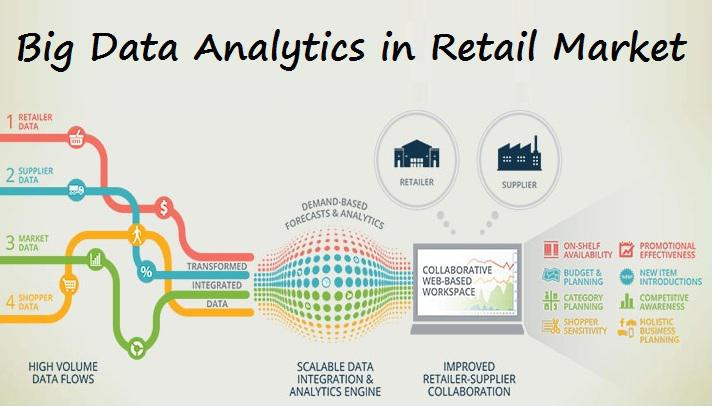
The retail industry is no stranger to using data to drive decision-making. With the rise of big data, retailers are able to gain even deeper insights into consumer behavior and preferences. In this article, we'll explore the ways that big data is being used to optimize operations and sales in the retail industry.
What is Big Data?
Big data refers to the vast amount of data that is generated by digital devices and systems. Big data is characterized by its volume, velocity, and variety. In the retail industry, big data can be generated by a range of sources, including customer transactions, social media, and website interactions.
Big Data and Retail Operations
Big data is being used to optimize retail operations in a number of ways:
- Inventory Management
Big data is being used to optimize inventory management. By analyzing data on sales trends, product popularity, and other factors, retailers can make more informed decisions about inventory levels and product assortment. This can help to reduce waste and improve profitability.
- Supply Chain Management
Big data is also being used to optimize supply chain management. By analyzing data on shipping times, transportation routes, and other factors, retailers can identify areas where improvements can be made. This can help to reduce costs and improve efficiency.
- Store Operations
Big data is also being used to optimize store operations. By analyzing data on foot traffic, sales patterns, and other factors, retailers can make more informed decisions about store layout, staffing levels, and other factors. This can help to improve customer experience and increase sales.
Big Data and Retail Sales
Big data is being used to optimize retail sales in a number of ways:
- Personalization
Big data is being used to enable personalization. By analyzing data on customer behavior and preferences, retailers can provide personalized recommendations and tailored marketing messages. This can help to improve customer experience and increase sales.
- Pricing Optimization
Big data is also being used to optimize pricing. By analyzing data on competitor pricing, customer behavior, and other factors, retailers can make more informed decisions about pricing strategy. This can help to increase sales and improve profitability.
- Marketing Optimization
Big data is also being used to optimize marketing. By analyzing data on customer behavior and preferences, retailers can make more informed decisions about marketing strategy, including which channels to use and which messages to deliver. This can help to increase customer engagement and sales.
The Benefits of Big Data in Retail
The use of big data in retail offers a range of benefits, including:
- Improved Efficiency
By using big data to optimize operations and sales, retailers can improve efficiency and reduce waste, leading to increased profitability.
- Improved Customer Experience
By using big data to enable personalization and optimize store operations, retailers can improve the customer experience, leading to increased loyalty and sales.
- Increased Sales
By using big data to optimize pricing and marketing, retailers can increase sales and profitability.
The Challenges of Big Data in Retail
While the use of big data in retail offers many benefits, there are also challenges that need to be addressed:
- Data Privacy and Security
Data privacy and security are major concerns when it comes to big data and retail. As more and more data is collected and stored, there is a risk that it could be misused or exploited. There is a need for greater transparency and accountability around how data is collected, stored, and used.
- Data Quality
Data quality is another challenge in big data and retail. Ensuring that data is accurate, complete, and consistent can be difficult, especially when dealing with large volumes of data from multiple sources.
- Balancing Art and Science
Finally, there is a need to balance art and science in the retail industry. While data can provide valuable insights into consumer behavior and preferences, it is important not to lose sight of the importance of human intuition and creativity in retail operations and sales.
Conclusion
The use of big data is transforming the retail industry. By analyzing large datasets on consumer behavior and preferences, retailers can gain valuable insights into howto optimize operations and sales. The use of big data in retail offers a range of benefits, including improved efficiency, improved customer experience, and increased sales. However, there are also challenges that need to be addressed, including data privacy and security, data quality, and balancing art and science. As the retail industry continues to integrate big data into its practices, it is important that these challenges are addressed in a way that prioritizes transparency, accountability, and the well-being of retailers, customers, and society as a whole.